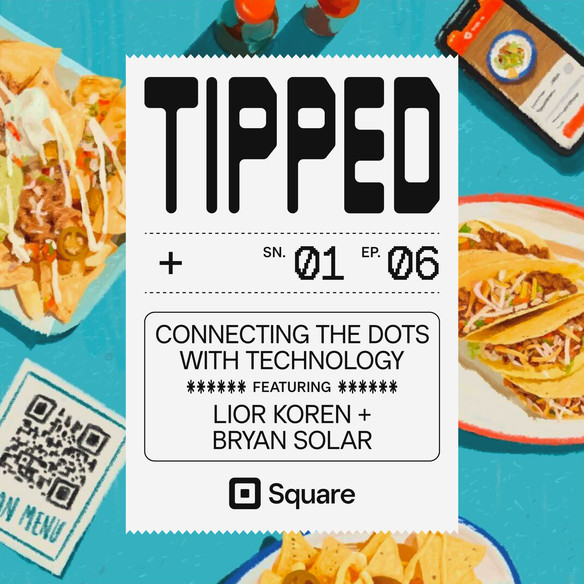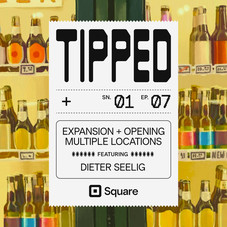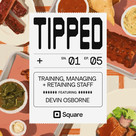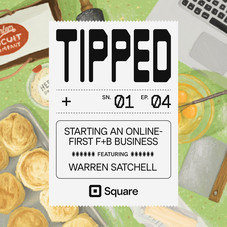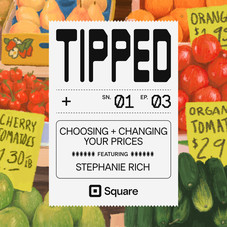Table of contents
The food and beverage industry has always been known for balancing innovation with tradition. As we’ve seen over the last couple of years, business owners in the industry have been focused on adapting their business to weather any challenges, with out sacrificing customer experience. That has not been an easy puzzle to solve, but with the help of technology, automation, and expansion of channels, businesses have been able to modernize with the customer in mind.
Square’s 2022 Future of Restaurants report found that 50% of restaurants added new products or services as a result of the pandemic, and 90% of restaurants agree that increased automation for back-of-house operations would allow staff to focus on more important tasks.
Bryan Solar, GM of Square for Restaurants and Lior Koren, product lead for Square for Restaurants share their top tips for how an omnichannel approach to restaurant automation can help businesses tackle the issues the industry is dealing with, without sacrificing customer experience and growth.
3 tips from Bryan Solar and Lior Koren of Square on how food and beverage businesses can use technology to streamline their operations:
- Meet your customers where they are with an omnichannel approach: “Omnichannel is about letting your customers engage with you, buy from you, come back to you in whatever way they want.” says Bryan Solar. “Make sure that however, a customer wants to engage with your restaurant, you have that availability, you have that option. Very often having that is the difference between whether or not they can build a deeper relationship with you.”
- Automate with technology: “One of the ways at restaurants can continue to introduce new channels and scale with the same staff and the same kitchen and the same on-premise environment that they have today is really by using technology to automate a lot of that. So, for example, with Square, there’s an order manager order hub where all orders from all the different channels appear in one central place and are sent to one central kitchen where those orders go to in order to be fulfilled in different ways. And that automation that’s introduced is what helps add additional incremental channels without burdening the business.” shares Lior Koren. “Also, when there’s one consolidated technology system across all of these different channels it makes it a lot easier to view sales by channel, to understand how you’re doing on each of the different channels, without increasing the overhead needed to really understand that as everything is in one central consolidated place.”
- Get to really know and understand your customers: “The expectations of understanding your customers is going to go up pretty dramatically. And I think that restaurants, the great restaurants are gonna figure out a way to use technology, to be able to greet someone at the door.” says Bryan. Lior adds that “technology is really going to help restaurants, create that environment for their diners, where they feel like a regular. They really get that experience because their restaurant has information around what they like to eat, what they purchased last time, and really can create that better experience for them.” Restaurants will use technology to understand their customers more and inform how they adapt their business, explains Lior “Technology is going to be really core to a lot of the decisions that restaurants will start making around how they diversify their business, how they determined to open a new type of revenue stream, or a new type of channel as well.”
Listen to more episodes of Tipped.
Full Transcript
Hi, and welcome to Tipped, a Square podcast. Today’s food and beverage owners currently face their fair share of challenges when it comes to successfully running and managing their businesses. As more and more customers return back to in-person dining, Square’s 2022 Future of Restaurants Report found that 50% of restaurants added new products or services as a result of the pandemic. And 90% of restaurants agree that increased automation for back of house operations would allow staff to focus on more important tasks. Today, we ask two in-house Square experts to weigh in on how an omnichannel approach to restaurant automation can help businesses tackle the issues the industry is dealing with without sacrificing customer experience and growth.
Bryan Solar: I think technology is now here to stay in the restaurant space and it’s just going to become more and more critical.
That’s Bryan Solar, General Manager of Square for Restaurants and former restaurateur turned technology business leader.
Bryan Solar: My grandmother started a Mexican restaurant and a bunch of my aunts and uncles and cousins on both sides own and run restaurants. My dad grew up working in the restaurant. And so about 15 years ago, I was doing strategy consulting and it was right during the recession and a bunch of restaurants and small businesses were getting just really, really crushed by everything that was [inaudible 00:01:37] out. So what started as like, “Hey, I’m going to go and help one or two restaurants and see if we can turn them around.” I just felt so connected to the people there that it started me on this path of working with restaurants.
And then one day the phone rang and it was Square. It was just a company that I really, really respected for a long time, mostly because I think Square’s mission of economic empowerment and making sure that folks have an opportunity to thrive is something that always resonated for me. I mean, especially as I think about restaurant owners is my aunts and uncles and cousins. I want to give them every chance to succeed. So the opportunity to be here and to be working on restaurants, it’s kind of a dream job for me.
Lior Koren, Product Lead for Square for Restaurants was able to blend her love of food and technology while working with various product development teams here at Square.
Lior Koren: I started on Square in the platform inventory and items team. I was focused on the catalog that any seller, whether restaurant or retail, building that functionality, and I transitioned over to the restaurant team about two and a half years ago. I love working with restaurants and learning about their needs and building technology that helps them be successful.
Bryan and Lior both agree that the three biggest challenges facing food and beverage owners today are finding and retaining staff, rising food costs and the slow evolution of integrating technology.
Bryan Solar: Staffing, I think has always been a challenge for restaurants, but now the number of dimensions by which it’s playing out are really, really putting restaurants in a tough spot. I think that folks getting paid a great wage is a great thing and the business needs to evolve to be able to support that. So I think staffing, and finding, and retaining great staff is, by far number one.
Number two, I think is rising costs. I mean, you look at food inputs and the NRA, The National Restaurant Association, has done really, really great work tracking some of the changes in food costs. And whether it be that bag of chicken that now is 20% more, or even … I was just talking to a restaurant owner today who said that the price of his thermal printer paper is up 12%. And so there’s so many components to running a successful restaurant. And the fact that all of those feel like they’re going up and the restaurant is in this spot, where they don’t know whether or not to pass that cost on to the customer or keep it themselves. And overall cost in all directions are going up. And so that I think is a real challenge for restaurants as well.
And then I think last but not least, the restaurant industry for a long time was very resistant to technology. And I think one of the things that happened over the course of COVID is it forced the whole space to accelerate almost overnight in terms of how technology works, what works, what doesn’t work, what connects and doesn’t connect. And I think for a lot of, especially longer tenured restaurants, they’re being pushed in a way to find new efficiencies that maybe doesn’t necessarily feel natural, but it is the most competitive industry that’s out there. And so you can’t fall behind and technology is going to become one of those things that either they’re going to figure out or, unfortunately the jungle’s going to come after them.
Lior Koren: When we think about these issues, I think there’s a few different parts. One is the staffing challenges and restaurants have had a really difficult time with hiring and retaining staff. And really in order to ensure that they can continuously run their service, a lot of what we’ve seen are restaurants adopting different ways of running their service. For example, adopting mobile, handheld points of sale so that they can take orders table side, and speed up the operation augmenting staff when they need to by QR code ordering as an example, so that diners can order at the table and the staff can spend less time taking orders and more time really building that relationship with the diner.
We’ve also seen a lot of automation be introduced into the kitchen to help both speed operations and augment any of the staffing challenges they’ve been seeing. Additionally, diners really expect to receive their meals in whatever way they choose to order, whatever way they choose for those meals to be delivered to them. And we’ve seen a lot of restaurants adopt technology to be able to handle the influx of ordering coming from all of these different channels and be able to fulfill them in a fast, but also high quality way.
Given these challenges, we asked both Bryan and Lior what the term, omnichannel, means in the restaurant biz, and how important it is in today’s ever-changing digital landscape?
Bryan Solar: Omnichannel is about letting your customers engage with you, buy from you, come back to you in whatever way they want. And so sometimes your customer might want to come in, they might want to sit down at one of your tables and order and be there. They might want to order online, either directly or through a third party. They might want to come by and actually pick it up curbside. They might want it delivery. All of these things are channels by which people can engage and have a relationship with your restaurant.
And so what omnichannel means to us is how do we make sure that however a customer wants to engage with your restaurant, you have that availability, you have that option to give it to them. Because very often having that is the difference between whether or not they can build a deeper relationship with you or whether it’s like, you know what? I thought this business was interesting. I tried. Their website was too hard. I’m going to go to the next one. I’m never going to build that relationship. When I think about restaurants, now, it’s the folks that are not only busy on Saturday and Sunday, but it’s also the folks that are busy across multiple channels. And those are the folks that you see are just like really successful because they’re covering their fixed costs. And they’re going way into the black, in terms of profit, by making sure that they’re getting all of the opportunity for customers that’s available to them.
Lior Koren: Adding a channel can definitely add incremental work to support that channel at first, and understand what sells better on that channel, how orders are coming in. But one of the ways that restaurants can continue to introduce new channels, and scale with the same staff, and the same kitchen, and the same on-premise environment that they have today, is really by using technology to automate a lot of that. So for example, with Square, there’s an order manager, order hub, where all orders from all the different channels appear in one central place and are sent to one central kitchen, with a lot of rules around the automation of where those orders go to in order to be fulfilled in different ways. And that automation that’s introduced is what helps add additional incremental channels without burdening the staff. Also, when there’s one consolidated technology system across all of these different channels, it makes it a lot easier to view sales by channel, to understand how you’re doing on each of the different channels without increasing the overhead needed to really understand that as everything is in one central consolidated.
__So how does one begin to develop an omnichannel approach you ask? Lior recommends starting small and expanding as your business grows.
__
Lior Koren: So a restaurant that’s a bit adverse to new technology can get started in different ways with really testing out technology in their business. So for example, if they’re not using technology yet, they may start with an online site, and online ordering as a first part to introduce that technology into their business and reach their diners off premise. And they can have one flow where a diner orders, and they’re not at this location, they receive that order, they view it in the kitchen, display in the kitchen, and they’re able to fulfill that order. And then they can continue to expand into the same point of sale as their online ordering sites. So everything is consolidated, and integrated, and then they can expand to additional functionality for managing their employees, and managing their marketing and outreach.
So it can start in different ways. They can start with just adopting an online site to start, or they can start by adopting a point of sale table side to take orders closer to their diners and then expand from there. And if they choose to go with a technology solution that offers an ecosystem of products, then they’re able to start small and then expand as their business grows, and as they become more comfortable using various forms of technology, and really see the benefit it has to their business.
Automation is critical for restaurants looking to take their operations from good to great.
Bryan Solar: I think that the expectations of understanding your customers is going to go up pretty dramatically. And I think that restaurants, the great restaurants are going to figure out a way to use technology to be able to greet someone at the door. And they’re going to be able to say, “Hey Jane, welcome back. We know it’s been about a month since you’ve been here. And we’re so excited that you’re back. And if you want, we can have one of those spinach dips that you like waiting for you on the table.” And so I think that level of customer understanding is going to be a really big deal.
Another thing that I think is going to be a big deal is thinking about how restaurants engage with their … We call it a tech stack, but some of my aunts and uncles would probably call it all the stuff they have to deal with. I think technology is now here to stay in the restaurant space and it’s just going to become more and more critical. And so what then becomes really important is how does all of that technology integrate with each other? And the best technology in my opinion is the one that the staff doesn’t feel, like it doesn’t create friction, it makes their lives easier. And so that’s going to be like one other thing that I watch.
And then the last thing is I think a lot about how ghost kitchens and virtual kitchens and online only concepts are going to change the entire restaurant dynamic. Because if you think about a restaurant and you think about the fact that, they’re paying rent, they’ve got overhead, they’ve got staff, they’ve got branding. In the not too distant future, there are these businesses that just explode it overnight, like food businesses and they exist almost entirely in virtual kitchens. And so one thing I obsess about a little bit is, how do I make sure that independent businesses have access to that macro trend? And as the head of restaurants at Square, one of the things that I think about is it’s our job to obsess about that on behalf of our restaurants. Because they’re so busy running their restaurant, that they don’t necessarily see the fastball coming until it’s just over the plate. And so we’ve got to have everything ready so that they’re able to capitalize on those things before they even come up on their front door.
Lior Koren: I see a trend where technology is really going to help restaurants create that environment for their diners, where they feel like a regular, they understand the relationship with their restaurant that they have, and they really get that experience because their restaurant has information around what they like to eat, what they purchased last time, and really can create that better experience for them. And then also using data to better staff their restaurant, to ensure that they’re staffing to the level of sales that they expect that day, and are able to maintain profitability. And so technology is going to be really core to a lot of the decisions that restaurants will start making around how they diversify their business, how they determine to open a new type of revenue stream or a new type of channel as well.
We asked Square sellers to send in their most pressing questions. Today’s question is, what do you think will be the next, really big disruptor in the restaurant industry?
Bryan Solar: I’m going to cheat. I’m going to say two things. So I’m going to say the first thing that I think is going to pretty aggressively disrupt the restaurant industry is if I tried to buy a plane. Not a plane. If I tried to buy a flight on a plane on a Friday night at 5:00 PM, it would cost me X. If I tried to take that same flight, that same distance, but Tuesday at midnight, it would cost me one fifth X, or one third X or something. Hotels, airlines, car, rental companies. They figured out a way to dynamically price really well. And what it does is it allows them to constantly be capturing new customers, and having the ability to make sure that their kitchens and their spaces are constantly utilized. The closest equivalent in the restaurant industry is happy hour, which is, if you think about it, happy hour is a pretty blunt instrument, it has no idea who you are, it doesn’t know if you’re a new customer, an old customer. And so I think dynamic pricing is going to be a huge deal for restaurants in the next couple of years.
The other one that I think is going to be a really big deal is in-house delivery. I think that pre COVID, delivery was kind of seen as like a side part of the business. And now you’ve got folks that are seeing like 40 or 50% of their business is all delivery. And so technology that helps restaurants do in-house delivery, I think is going to be a really, really big deal. And restaurants, I hope, and I think are going to start really obsessing about their customers and having loyal relationships with their customers and direct relationships with their customers.
We asked Bryan and Lior to pass on the best tips they’d give to business owners out there.
Lior Koren: The best advice I would give a restaurant is that while the industry may change, diner preferences may change, the way they interact with your business may change. One of the most important things to keep in mind is the technology that you use and how scalable and how adaptable it is to that changing landscape. It’s important to choose a technology partner that you believe is going to be one to grow with you and expand, as you decide to change and adapt your business. Whether it’s creating a new subscription for a certain cooking class or subscription for wine, or adapting to different channels, choosing a technology partner, that’s at the center of the business, that’s going to enable you to quickly adapt, quickly test, and quickly add that functionality will be really critical as we continue forward. Because we’re going to see the industry continue to evolve, we’re going to see expectations from diners continue to change. And it’s important to have that partner that will be able to help you do that along the way and make those changes.
Bryan Solar: I would say the piece of advice that, if I could go back in time and I would definitely tell myself, is just the importance of listening and learning. I think that there is just so much value in having folks with fresh perspectives look at your problems and have them give you candid feedback, listening to your customers, listening to your staff.
Thank you to Bryan and Lior for their time and insights today. If you want to hear more like this, make sure to subscribe to Tipped on Apple Podcasts, Spotify, or your podcast app of choice. You’ve been listening to Tipped, a Square production. This episode was produced by Kaitlin Keefer and Clara Shannon. Our music was composed by Jordan Wallace with sound recording by Sorrentino Media and D.R. Baker. Thanks for listening.
![]()

